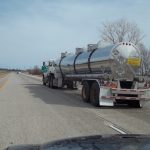I am only one of many companies that provide HazMat Employee training. Of course, I highly recommend my services, but how are you to know if I’m the right trainer for you? One way is to check out my website to review the information there. Another is to contact me for a free consultation on your training needs. A third way, and the point of this article, is to ask the following questions of any prospective training provider; their answers – as compared to mine – will help in making your decision. You may also be interested in another article of mine: 8 Questions to ask Your RCRA Training Provider.
1. How do I identify my HazMat Employees?
A: I have found that most companies do not identify all of their HazMat Employees to begin with and therefore fail to train adequately. A HazMat Employee is defined at 49 CFR 171.8, and includes a person who in the course of employment directly affects hazardous materials transportation safety. Please read here for a complete description of who is a HazMat Employee at your facility.
2. What are the regulations that require training of HazMat Employees?
A: the regulations for HazMat Employee training can be found at 49 CFR 172, Subpart H.
3. Does your HazMat Employee training include a test?
A: The answer should be ‘Yes’. 49 CFR 172.702(d) requires testing as a part of HazMat Employee training.
4. Is this training required by the US Department of Transportation (DOT) or the Pipeline and Hazardous Materials Safety Administration (PHMSA)?
A: A trick question, the PHMSA is actually the administration within the DOT that is responsible for the domestic transportation of hazardous materials (and all materials by pipeline). I’d give them a pass if they say DOT, but PHMSA is the better answer.
5. Are you, or is your HazMat Employee training, certified by the DOT/PHMSA?
A: The correct answer is ‘No’. Neither the PHMSA nor the DOT “certifies” a training provider or training material.
6. Will you certify or ensure that my HazMat Employees are adequately trained and tested?
A: It is a little-known, but critical, fact that 49 CFR 172.702(a) & (d) requires the HazMat Employer (that’s you) to ensure their HazMat Employees are adequately trained and tested, not the training provider. The correct answer is, “Yes, I provide the training and testing; you as the HazMat Employer ensure it is adequate.”
7. How often is HazMat Employee training required?
A: An easy one. Initial training must be provided for new HazMat Employees (either recent hires or newly assigned job duties) within 90 days of employment, and they must be supervised by trained personnel in that time. Recurrent training must take place at least once every three years (triennially) per 49 CFR 172.704(c).
8. What recordkeeping is required for HazMat Employee training?
A: The correct answer to this question is very important since improper training recordkeeping is one of the top violations issued to HazMat Employers. The HazMat Employee training recordkeeping requirements can be found at 49 CFR 172.704(d), and include:
- The HazMat Employee’s name.
- The most recent training completion date.
- A description, copy, or location of the training materials.
- Name and address of the training provider.
- Certification of training and testing.
9. What subjects must HazMat Employee training include?
A: The requirements for HazMat Employee training content are documented at 49 CFR 172.7o4(a), and include:
- General Awareness/Familiarization Training
- Function Specific Training
- Safety Training
- Security General Awareness Training
- In-Depth Security Training (if applicable)
Read here for a more complete explanation of the required training content for HazMat Employees.
10. What training is required for HazMat Employees who transport hazardous materials over a public roadway?
A: A person who transports any quantity of a hazardous material over a public roadway must receive HazMat Training as indicated in #9 above and must receive driver training per 49 CFR 177.816. The maintenance of a Commercial Drivers License (CDL) with the HazMat endorsement may suffice in lieu of this training for some drivers. Read here for a more thorough explanation of the training requirements for HazMat drivers.
11. Are you a lawyer?
A: I have nothing against lawyers, and in some situations, their services are invaluable. However, they don’t always make the best trainers because their experience has been interpreting the regulations and their legal justification instead of what you must do to comply with them. My experience prior to starting this business has been “on the shop floor”: driving a truck, handling hazardous waste, completing weekly inspections, conducting agency inspections, preparing shipping papers, and more of the like. I feel my job as a trainer is to reveal the regulations and teach you methods of compliance I have learned over the years, not the Genesis of the regulations. At my training you’ll learn how to do your job, not why you have to do it.
I could go on, but these are the big ones. Incorrect answers to the above, or a “huh?” are warning signs telling you to look elsewhere for your training provider. As I indicated above, I am willing to answer any questions you may have about HazMat Employee training, or the other training service I provide: RCRA training for hazardous waste personnel. I complete both training requirements (HazMat Employee and RCRA) in one day, either at an open enrollment training event or as on-site training. Either way, it is great training at a great price.


